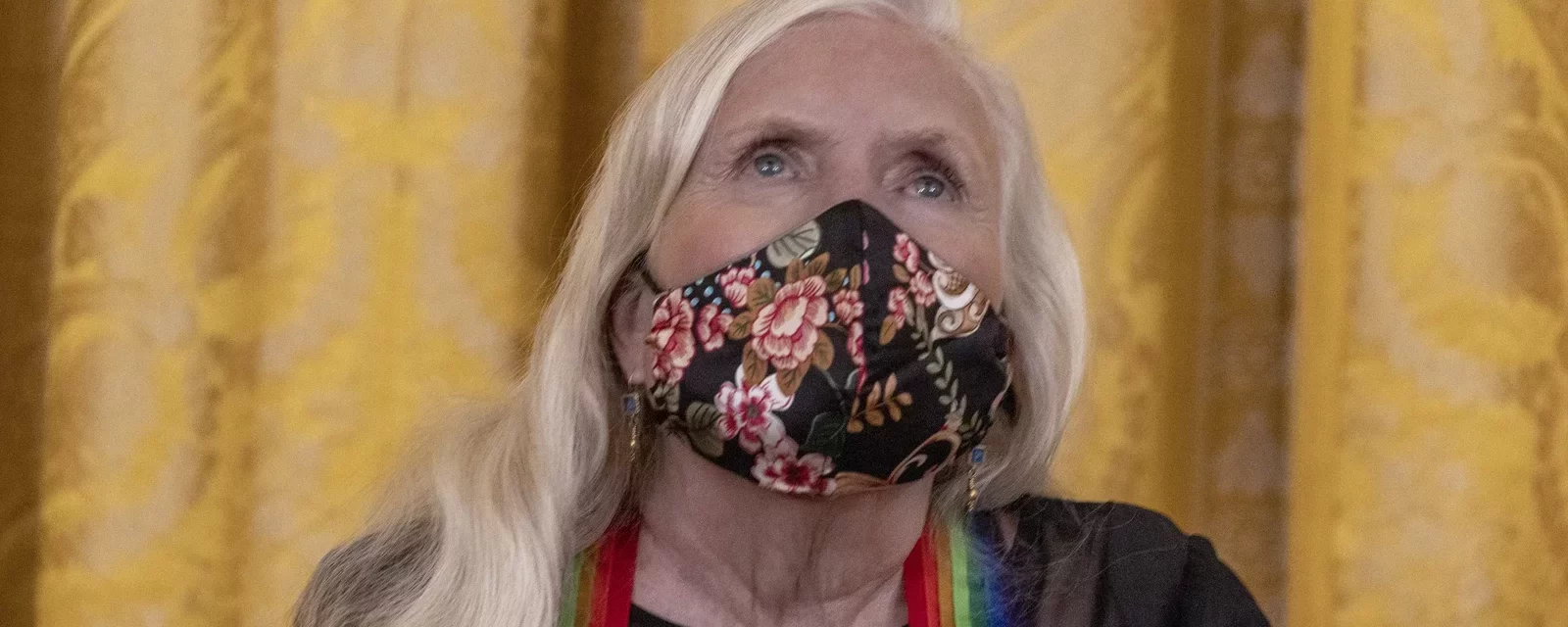


George Harrison “All Things Must Pass 50th Anniversary”
Record Label: Capitol/UMe
There’s a cringing moment in Peter Jackson’s Get Back documentary, filmed shortly before Harrison walks out of the 1969 sessions, when the ‘Quiet Beatle’ announces he has a new song. He sings it softly, his manner reserved. And when he finishes, John and Paul simply start talking about something else. Even as fractured as their relationship was at that point, the pair’s intimidation hangs heavy in the room. Harrison might have been in the biggest band in the world, but it’s still staggering to see Lennon and McCartney dismiss their friend as little more than an afterthought. Harrison had managed to land a couple of songs on most Beatle albums, but it was really only his last few years with the group that he had started to write in earnest. When later in Get Back, he boasts he has more than an album’s worth of songs stored up, he wasn’t exaggerating. Writing and collaborating with artists like Bob Dylan who treated him as equals, emboldened and awakened Harrison as an artist. His micromanaged Beatles world began to feel smaller than ever. Eyeing his first solo recording of songs, it was understandable Harrison was ready to go big. The sessions were overstuffed, incorporating two drummers, two bass players, an army of guitarists and other musicians including Badfinger and Eric Clapton’s new band. Phil Spector, fresh off salvaging the Get Back sessions for the Let It Be album, was hired on as co-producer. The recording sessions were long and chaotic, but in the end, All Things Must Pass emerged as a masterpiece. It eclipsed Lennon’s stark, brilliant Plastic Ono Band, released at the same time, and went on to drastically outsell other post-Beatle mile markers like Ram, Imagine, and Band on the Run. Rock’s first triple-album of all original material is widely considered the best solo album by any Beatle. This new ‘Super Deluxe’ version includes numerous outtakes, but the thirty demos are the real hidden treasure. Exposed, you can hear in Harrison the passion, nervousness, and excitement of an artist finally getting to call his own shots. You also hear what’s missing, the magic holography Phil Spector and Harrison would apply to mid-tempo balladry like “Beware of Darkness”, “My Sweet Lord”, “Let It Down”, “Run of the Mill”; the dense and surprising electricity powering rockers like “Wah Wah”, “What Is Life”. It’s not only Harrison’s pent-up artistry that made the record such a success, it’s the sound; transforming the intimate into a joyous celebration. ATMP boasts one of the most thrilling and unique rock productions of all time. But – you won’t find it here. Like all of the voluminous Beatles reissues, the album has a new remix. Remixes can be fun to hear; they emphasize new parts, present material in a new light. In his lifetime, Harrison came to regret piling on to what he called the ‘overly busy production sound of the time’. Attempting to find ‘new clarity’ by stripping away effects and emphasizing his vocals in the mix is a worthwhile experiment. But it’s just that. There are interesting moments in these remixes, and they do attempt to preserve the spirit of the original. Yet at times they are jarring and fall flat. In a large collection celebrating a classic that represents some of Spector’s best work, particularly one that includes (on the CD version) a blu-ray DVD and almost forty minutes of superfluous ‘Apple Jams’, how can there not be room to include the original album? It’s the set’s one significant flaw. We’ve all had the experience of seeking out an old song on digital streaming platforms, only to find a weird, cheaper, alternate take. How many people sold their original copy of ATMP in anticipation of buying this box set? How long before this kind of revisionist history becomes what people remember? Back in 1971, when the album was first released, Harrison had planted his feet more in a more spiritual arena than the man who once wrote “Taxman”. Even so, the success of ATMP must have been immensely gratifying. Harrison largely stayed above John and Paul’s sniping in the post-Beatles world, but there’s no mistaking the significance of his album’s title, or even its cover photo. On “Wah Wah”, his declaration of independence written during his temporary 1969 Beatles walkout, he’s not so much angry as determined. “I know how sweet life can be / If I keep myself free.” He wouldn’t get there for another year, but after a career of hiding in plain sight, he knew exactly how to move forward. “The biggest opportunity in any of our lives,” he writes in notes included here, “is to become realised.”
-Jeff McCord



Joni Mitchell “Archives Volume 2 – The Reprise Years (1968-1971)”
Record Label: Rhino
Brandishing the same quirky character as its predecessor, Volume 2 of Mitchell’s Archives series covers the period of her first four albums and coincident rise to fame. There’s over six hours of music here, much of it previously unreleased. Yet if you’re expecting revelations into Mitchell’s songwriting processes, you’re liable to be disappointed. Much of the set is turned over to live concerts, presented in full in a few cases (a long-lost 1968 Ottawa date recorded by Jimi Hendrix (!), a poised solo Carnegie Hall debut from 1969, a John Peel-hosted BBC session from 1970). On the few studio demos here, some lyrics aren’t quite there, but there’s no evidence of any kind of radical restructuring. The biggest discovery might come from the rambling new interview (itself a rarity for Mitchell these days). Asked repeatedly if she regrets decisions made along the way, the answer is almost always ‘no’. “Like all of my albums,” she answers. And there it is: the key to her remarkable success. Famously disdainful of producers, Mitchell has always produced herself. (the exception is her debut, Song of the Seagull – she’s complained long and loudly about David Crosby’s production.) What we hear on her recordings is exactly what Mitchell hears in her head. Unlike her peers, Mitchell never cultivated a persona or pretended to be something she’s not. Her music has gone through lots of changes. And she’s not without her contradictions – a strong and female in an industry where few were allowed to flourish (especially in the 60s/70s), yet one whose life and music have leaned heavily on her male partners. And Mitchell was initially hesitant to issue these early recordings, for fear of sounding like an ‘ingenue’. (Not unfounded – her nervous performances of other’s songs on Volume 1 can be hard to take). Yet rarely has an artist emerged so completely comfortable in her own skin. She left “Both Sides Now”, already a huge hit for Judy Collins, off her debut album because she felt it didn’t fit thematically. She shares her new songs, lyrics incomplete, in front of live audiences, where she seems completely at home. In front of an all-star crowd that includes Bob Dylan and her parents, she nails her solo debut at Carnegie Hall. The quirks in this set come with the head-scratching inclusions; pointless small talk with Dick Cavett, barely intelligible apartment recordings, perfunctory on-stage introductions (with a couple of exceptions – how did I miss that “Circle Game” is an answer song to “Sugar Mountain”?). There are a few cool rarities, too; her version of “Urge for Going”, other odd orphaned tracks. But for the most part, we get the masterful songs that eventually find their way on her early albums. These artfully woven stories celebrate life, love, pain, and humanity, and culminate in her widely acclaimed fourth album, Blue. Hopeful and at times emotionally gutting, confessional in a way no songwriter had previously dared, there are only hints here to the album’s genesis (alternates of “River”, “A Case of You”). As Mitchell loses her folkie vibrato and slips into a more somber tone, she uses her admitted vulnerability to craft an album that dominates lists of the best recordings of all time. In her interview, Mitchell muses as to why not her other recordings. She’s got a point. The record is an undeniable classic, but there’s a full career of extraordinary recordings and changes ahead. To Mitchell, it’s all part of her story. “I don’t overthink things,” she confesses. “I just do it.”
-Jeff McCord



David Bowie “Brilliant Adventures [1992-2001]”
Record Label: Parlophone
By any measure, Bowie’s legacy is astounding. But drilling down beyond the hits, (Adventures is the fifth in a series of more or less completist box sets released by Parlophone), you find a career marked by failed experiments and abrupt left turns. Despite all his 60s and 70s successes, it was the slick, against-type 1983 release Let’s Dance that was Bowie’s commercial peak. Weak follow-ups (Tonight and Never Let Me Down) failed to recapture lightning in a bottle, and they kicked off Bowie’s most perplexing period, extending well into the next decade. The everything-goes box set series breaks precedent and completely ignores Bowie’s Tin Machine detour (which probably echoes the sentiments of many Bowie fans). It begins with 1993’s Black Tie White Noise, which reunites Bowie with Let’s Dance producer Nile Rodgers, and ropes in unusual collaborators like Art Ensemble of Chicago trumpeter Lester Bowie. Yet the songs are skeletal, and in his liner notes, Rodgers still smarts, decades later, over Bowie’s lack of ceding control. Four other studio albums are in the set. The Buddha of Suburbia, a BBC soundtrack/art project never even released in the US. Outside brings back collaborator Brian Eno, but in true fashion, Eno insists Bowie come into the studio without a single idea, and gives the band prompts like “You are a musician in a Soul-Arab band in a North African role-sex club…” to gets things started. Earthling, a forced gene-splicing of skittish, jungle/techno beats, follows. 1999’s Hours stands alone as feeling the most like a David Bowie album. The set also includes a full-length 2000 BBC live session, multiple rarities, and outtakes, and the first official release of Toy, a scrapped 2001 revisit of Bowie’s earliest songs. If you’re searching for hits, you won’t find them in the seven hours of music included here. Inching towards a career coda, those days were more or less behind him. These albums all sold decently, and they aren’t without their share of memorable songs. Yet viewed in retrospect, instead of WTF, there emerges something else: fascination. Torn between the desire for continued success and his ingrained artistic tendencies, his experiments, detours, even his failures, all resound with a singular vision. Driven and restlessly ambitious, Bowie never stopped moving. You feel it here, his searching, reaching, all while daring the world to follow through his changes.
-Jeff McCord
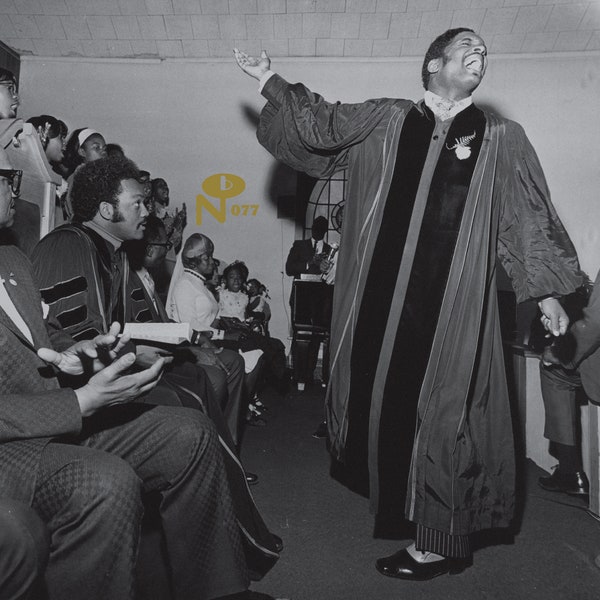

Pastor T.L. Barrett and The Youth for Christ Choir “I Shall Wear A Crown”
Record Label: Numero Group
While divisions in the sixties and seventies were sharply drawn, the borders seemed less impenetrable than today. The youth then were fighting for civil rights, against Vietnam, loving one another. Evangelicals, super churches and activist Catholic bishops had not yet politicized Christianity. Religion was finding a home among some of America’s youth, too, drawn in not so much by the gospels but by the overwhelming power of music. Nestled on the charts among Zeppelin and Hendrix were “My Sweet Lord”, “Oh, Happy Day”, Jesus Christ Superstar. And achieving regional fame on Chicago’s South Side was Pastor T.L. Barrett. Barrett was a fiery orator, yet it was the contemporary arrangements and hair-raising 45 human voices of his Youth for Christ Choir that were packing the pews. Barrett would record and release five albums of his choir’s music during the seventies. Light in the Attic had reissued his debut, Like a Ship, in 2010, but it was really when Kayne West sampled one of his songs on his 2016 Life of Pablo album that the pastor began his slow-roll to wider acceptance. Lured by the music’s power (and relatively low licensing costs), advertising, TV and film followed suit, and soon you were hearing Barrett’s music everywhere – Hacks, an Obama doc, an Under Amour commercial. Covers by DJ Khaled and Leon Bridges followed. And now Numero Group has gathered up all five of Barrett’s albums and numerous sermons on a new box set. There’s a lot to absorb here, and over time, a certain sameness sets in. The latter albums aren’t as strong, and you’re not going to put the sermons on shuffle play. But there is no denying the choir’s impact and power. Set to rollicking rhythms laid down by a piano-driven rhythm section, the jubilant voices rise, swell and reverberate, and your blood pressure soars right along with them. Buoyed by optimism, the best selections are the least preachy, echoing the works of Aretha, Stevie and others, and stirring the heart in a time when it’s tough to believe in anything.
-Jeff McCord
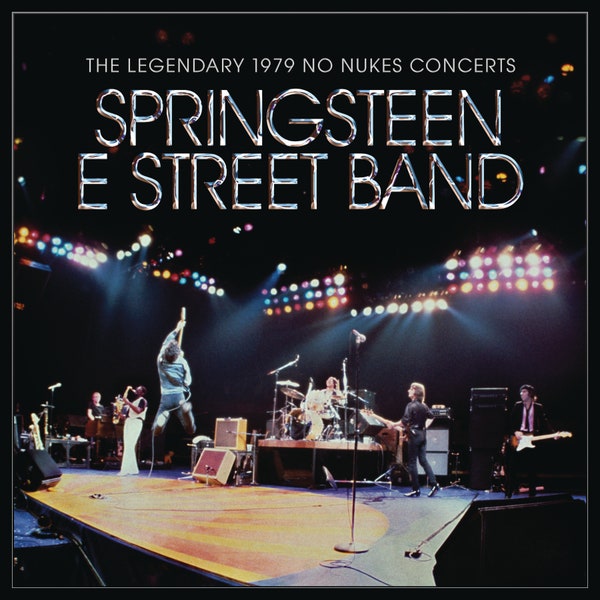

Bruce Springsteen & The E Street Band “The Legendary 1979 No Nukes Concerts”
Record Label: Columbia
The moody 80s gravitas of The River and Nebraska redefined Springsteen the songwriter, yet his exhilarating three-hour marathon performances from 1975-78 had already snowballed his popularity. These shows are indelibly etched in the minds of those lucky enough to be there – which is good, since the few recordings and snippets of film from that time fail to capture the full-on experience. Filmed and professionally recorded, the two nights of 1979 No Nukes benefit shows aren’t the ironclad evidence we’ve all been missing, but they’re as close as it comes. Temporarily freed from exhaustive recording sessions that would later yield The River, the E Streeters recreate their wizardry from muscle memory in a truncated time slot. The recording is solid, but the film is dark and grainy, with cameras often in the wrong places. Even so, the magic cuts through. “Prove It All Night” shakes off the rust, and from there the setlist (three more Darkness tracks, a couple of previews from The River, vital takes of “Thunder Road” and “Jungleland”, etc.) builds and builds. Clemons and Bittan share a lot of the spotlight, while Springsteen is feral, prowling the stage, climbing, jumping, sliding, coaxing every drop of enthusiasm from his band and audience alike. On the frenzied half-hour encore of oldies, his schtick seems to signal the turning point to come. “I can’t go on like this,” he exclaims, clutching his chest in mock agony. “I’m thirty years old!” Many peaks would follow, and now 72, his career still continues to inspire. But that night, he left the innocence of his youth right there on the stage.
-Jeff McCord
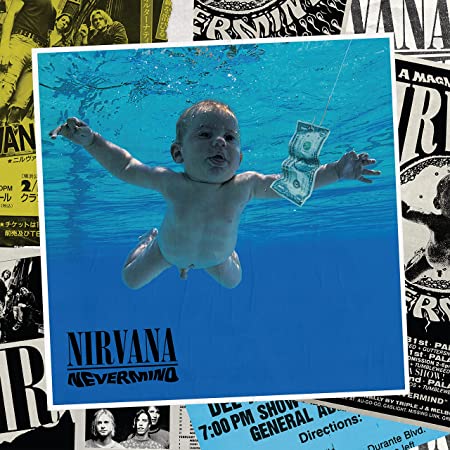

Nirvana “Nevermind 30th Anniversary Edition”
Record Label: DGC/UMe
In one sense, it’s hard to believe 30 years have passed since this Aberdeen trio broke open, unleashing the thunder of a tiny Northwest scene on hibernating rock fans. Yet it’s also hard to believe it’s only been thirty years. Kurt Cobain’s 1994 suicide slammed the door on a grunge movement that had barely had the chance to grab hold. Presented in vinyl and CD/DVD formats, the material here, save for the watershed original album, consists of after-the-fact, well-recorded live tracks (70 ‘officially’ unreleased), all taken from the same period. While the band leans heavily into their earlier material, the similar arrangements and setlists leave not that much to distinguish one show from the next. And absolutely no insights into Nevermind’s origins. And the deluxe 12” booklet, full of color photos, contains not a word on the subject. Really? No one wanted that gig, writing about one of the most successful albums ever? Not one writer, surviving band member or friend wanted to explore the yin/yang mix of Cobain’s vulnerability and ferociousness? There are no demos here, outtakes, anything, even those that were included in the 20th Anniversary edition. Maybe they burned up in the catastrophic fire that occurred when Universal stored their music archives in the back of a theme park. Or more than likely, just like in that moment of infamy, no one was really minding the store, and the lucrative Christmas season just snuck up on them. Or maybe this set is intended as an homage to the original grunge movement itself. You know – zero fucks.
-Jeff McCord


Lennie Tristano “Personal Recordings 1946-1970”
Record Label: Dot Time / Mosaic
In many respects, Lennie Tristano was unique among jazz pianists of his time. He tended to approach improvisation methodically, as if he were solving a math problem. His long single-note runs were imaginative, his two hands flying apart as if they served separate humans. His contrapuntal group recordings roamed exciting new territory. Beboppers admired him – Charlie Parker was a friend and collaborator. He influenced Miles’ Birth of the Cool, other groundbreakers like Paul Bley. Yet to some, his approach felt dispassionate. Tristano was more concerned with standing apart, and that led him to teach his students the same resistance to imitation. When teaching became his focus, his recorded output suffered. Clocking in at 74 selections, Personal Recordings more than doubles the amount of Tristano recordings available. In the no-alternate-take-unturned world of Mosaic collections, this is an outlier. The tracks – a mash-up of studio recordings, live sessions, airchecks – are neither complete nor chronological. Instead, they are carefully curated by Tristano’s daughter from his archives, recorded for fun, and never intended to be heard by the general public. Grouped by style, we hear his early excursions into free jazz (not tied to any chords – Tristano was one of the movement’s first pioneers), playful blues-based group safaris, trio recordings from NYC’s Half Note, sessions with frequent collaborators Lee Konitz and Warne Marsh, and a full disc of seemingly impossible solo piano creations. Throughout this material, Tristano shows breathtaking dexterity. It’s clear he could have forged a much bigger career for himself playing the music he loved. Instead, he was more than content to pass it on.
-Jeff McCord


Bush Tetras “Rhythm and Paranoia: The Best of Bush Tetras”
Record Label: Wharf Cat
For the first and possibly only time in their long career, Bush Tetras put out the right song at the right time. “Too Many Creeps”, their nervy single debut, rang out like a shot in NYC’s gritty 1980 Downtown scene. The song was a cry of feminine exasperation, and almost universally applicable. It felt like a hit. Yet it was not to be, nor was their 1981 EP produced by The Clash’s Topper Headon. Their taut, piano-wire angst peppered their fans. Their few recordings captured their merciless attack. Admired by their peers, the band rubbed shoulders with Downtown alums destined for bigger success. But the Tetras, like the Downtown scene itself, flamed out quickly. Yet they weren’t done, not by a long shot. For most of their messy, decades-long career, the lineup that locked in – former Contortions guitarist Pat Place, vocalist Cynthia Sley, bassist Laura Kennedy and drummer Dee Pop – is the one that reigned. After their breakup in 1983, it was more than a decade before they reunited. By that point Pop was deep into free jazz, Place was into Soundgarden. Yet they found their mojo again, for the first time recording two full-length albums, though a record company sale shelved their second for fourteen years. The band had shed most of their eighties drug dependencies but they still fought, breaking up again in 1998. Seven years later, they’re back at it again, only to lose Kennedy to liver disease in 2011. Yet for all their setbacks, the Tetras output is remarkably consistent. Rhythm and Paranoia (a term coined by Kennedy) isn’t the band’s first compilation, but it’s the first to give equal weight to their post-eighties output. Despite a few slips over the line into faux-metal, the set is well-curated and full of surprises, adding to the mystery of how the band continues to toil in obscurity. “Mr. Lovesong” is another should’ve-been that sounds like the Go-Go’s evil twin, and among other rarities, the collection wraps with an excellent Third Man EP recorded in 2018. Particularly in view of the current UK post-punk revival, the Tetras work feels vital as ever. Yet just after Rhythm & Paranoia’s release, the Tetras secret weapon, drummer Dee Pop, died suddenly in October. Sad but undaunted, the band vows to carry on. I’d count on it.
-Jeff McCord


The Replacements “Sorry Ma, Forgot To Take Out The Trash”
Record Label: Rhino
It’s 1980. Paul Westerberg waits nervously in a Minneapolis record store for his turn to talk to local scenester Peter Jesperson, clutching a hand-scrawled cassette demo he hopes might lead his new band, the Replacements, to being considered for some opening gigs somewhere, sometime, somehow. Westerberg had wormed his way into the original Stinson brothers band Dogbreath, a unit that played instrumental Nugent and Yes covers, ostensibly to be their rhythm guitarist. He had other ideas. Taking over as vocalist and songwriter, he churned out ‘adaptations’ of his favorites from the Pistols and Johnny Thunders, with no more hopes in mind beyond leaving his day job as a janitor. Yet when Jesperson finally called back, it wasn’t with a gig but a record deal. The Replacements 1981 debut, Sorry Ma, is the latest in their catalog to get the deluxe Rhino vinyl/4-CD combo reissue. Focused and tight in a way they never were live, the young band speeds through delirious, catchy, self-deprecating pop-punk with the bare bones of an album that was knocked out in a day. In truth, it was the product of months of demos, studios, false starts and aborted sessions, all of them rounded up here. Contrary to their well-deserved clownish, drunk reputation, Westerberg, weary of being in acts that went nowhere, had put the young band through the paces in rehearsals. To the best of their abilities, they were ready. There’s little here that’s a harbinger of the heart-on-the-sleeve masterpieces like “Sixteen Blue” and “Answering Machine” Westerberg would be writing just three years later. At this point, they could have proved to be just another one-trick pony, and they knew it. Even if the songs weren’t as developed, their hunger was undeniable, sustained throughout the hours of music in this set. Jesperson had even spotted it in their cassette demo. With no other options, the Replacements were a band determined to push on. And their triumphs to follow might have never happened without this leaping bolt out of the gate.
-Jeff McCord


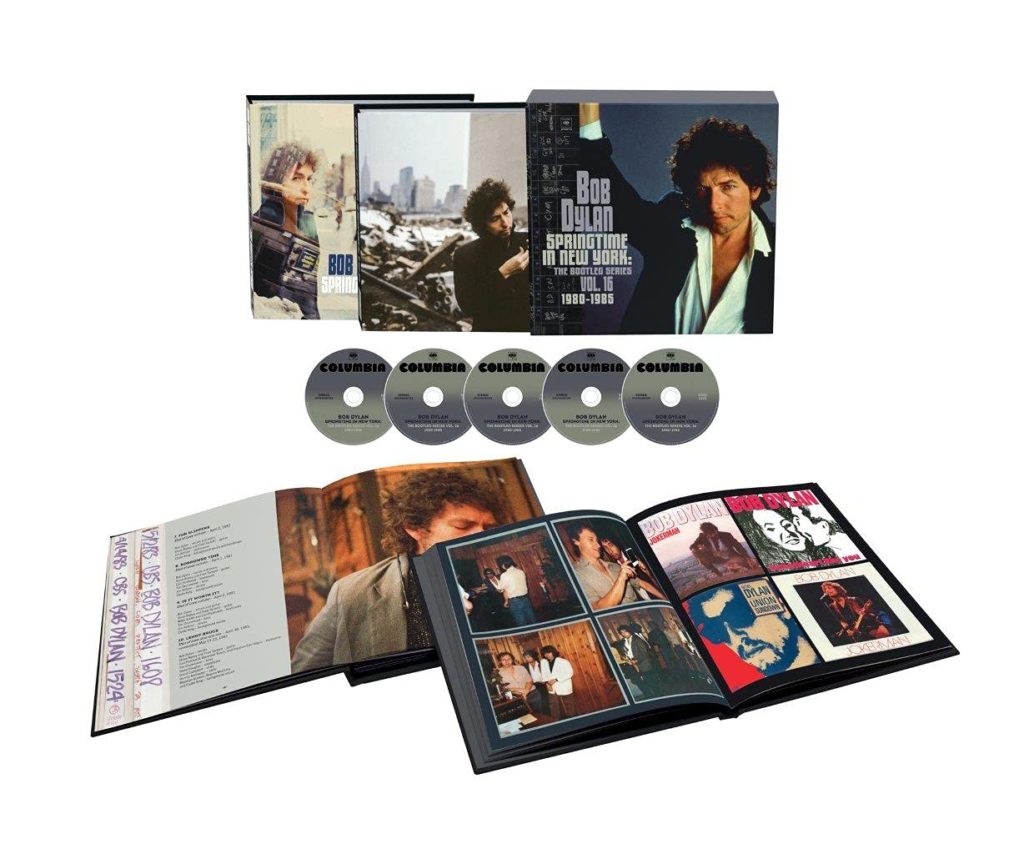
Bob Dylan “Springtime In New York: The Bootleg Series Vol. 16 1980-1985”
Record Label: Columbia Legacy
Dylan’s songs have always been organic, living things. Even if you have your favorites, in his mind there’s no definitive version of any of them. They continue to evolve. Understanding this is key to appreciating Dylan’s work process, not only in concert but on his most baffling recordings. Tracks seemingly tossed-off might have gone through fifty or more takes. Other gems are discarded entirely. Dylan searches for a raw and immediate feel, and he knows it when he finds it, even if his choices make no sense to anyone else. Early on, Dylan began releasing his orphaned work. The Bootleg Series began in 1991 as a fussy, curated glimpse, but as the sets have expanded (Vol. 16 has over four hours of music), they’ve become more of a clearinghouse. Even the outtakes have outtakes. The finds range from mildly curious to astonishing, and there are more than a few duds. On paper, Springtime, covering music from his Shot of Love to Empire Burlesque period, already sounds like trouble – not exactly his most beloved releases. Between those two, though, is the more favorably regarded Infidels, an album well known to Dylan fans as one, like Blood On The Tracks, that he completely reworked. Its predecessor, Shot of Love, was a curtain call to Dylan’s weird proselytizing Christianity period. Yet the Shot rehearsal tapes here reveal that Dylan was already growing bored with the conceit. Some of the set’s worst material is here (and there’s a lot of it), Dylan taking up his band’s time on bar band arrangements of “Fever” and “Sweet Caroline”. Rough. (OK, I kind of like “I Wish It Would Rain”). There is, though, a beautiful outtake of a tune called “Angelina”, one of several tracks Dylan reworked endlessly before leaving it off the album entirely (and like other standouts here, an alternate version of the track that originally appeared on Bootleg Sessions Vols. 1-3). The Christianity period was not loved by fans, so a stung Dylan made the unusual move of hiring producers to infuse some modernity into his next two records. Infidels largely succeeded, though much was redone after Mark Knopfler had moved on, yet Arthur Baker’s slick eighties tweaks doomed Empire. In both cases, the alternates and outtakes here reveal the albums that might have been. Knopfler and Mick Taylor tear into “I & I”, and there’s a ragged version of “Clean Cut Kid” featuring Ron Wood, a rare Willie cover. Punk band the Plugz back Dylan on the Letterman version of “Time to Kill” (though fan-favorite “Jokerman” from the same show is curiously omitted). Empire tracks are pleasantly stripped of their gloss, and earlier, formative versions of other favorites feel like encountering an old friend in a completely unexpected place. Best of all are new versions of orphaned classics “Blind Willie McTell”, “Foot of Pride”, and a stunning “New Danville Girl”, a track reworked and buried years later on the forgettable Knocked Out Loaded album. That might sound like a lot- and it is- but it makes up barely half of the music included. Let your level of interest be your guide as to how deep you want to dive into Dylan’s bottomless well.
-Jeff McCord

